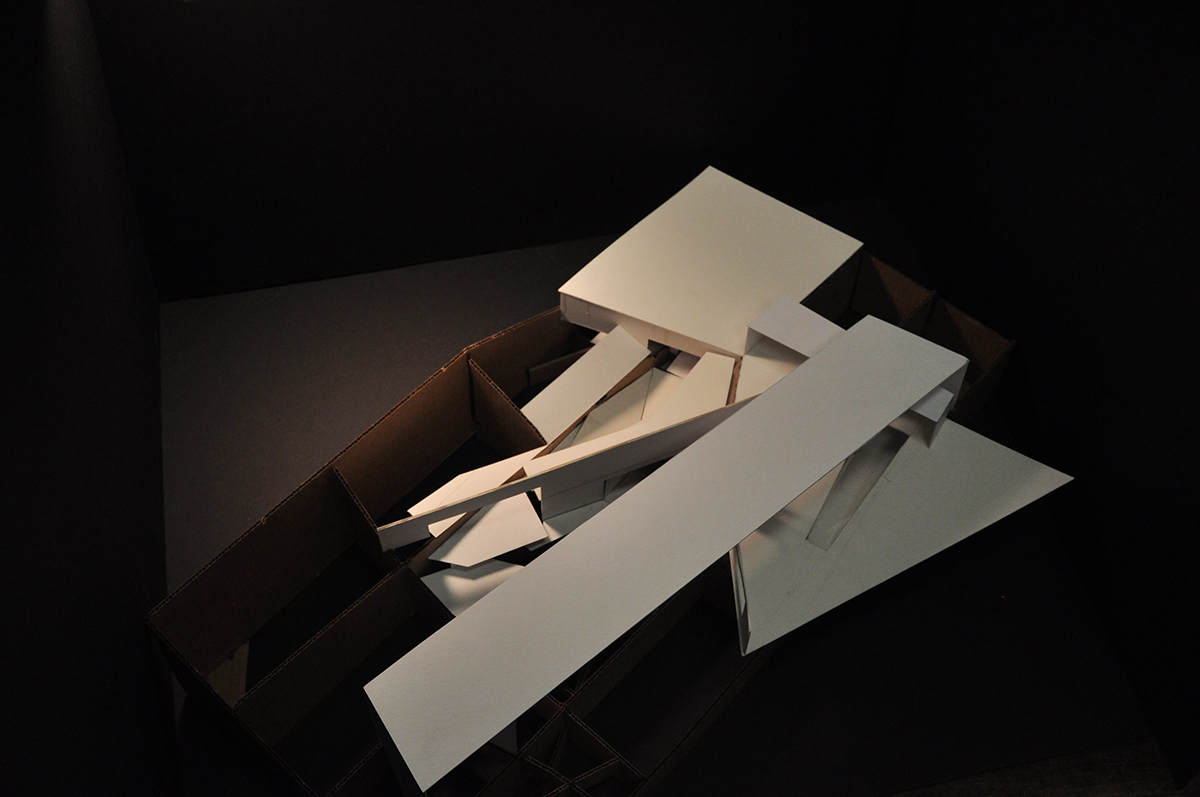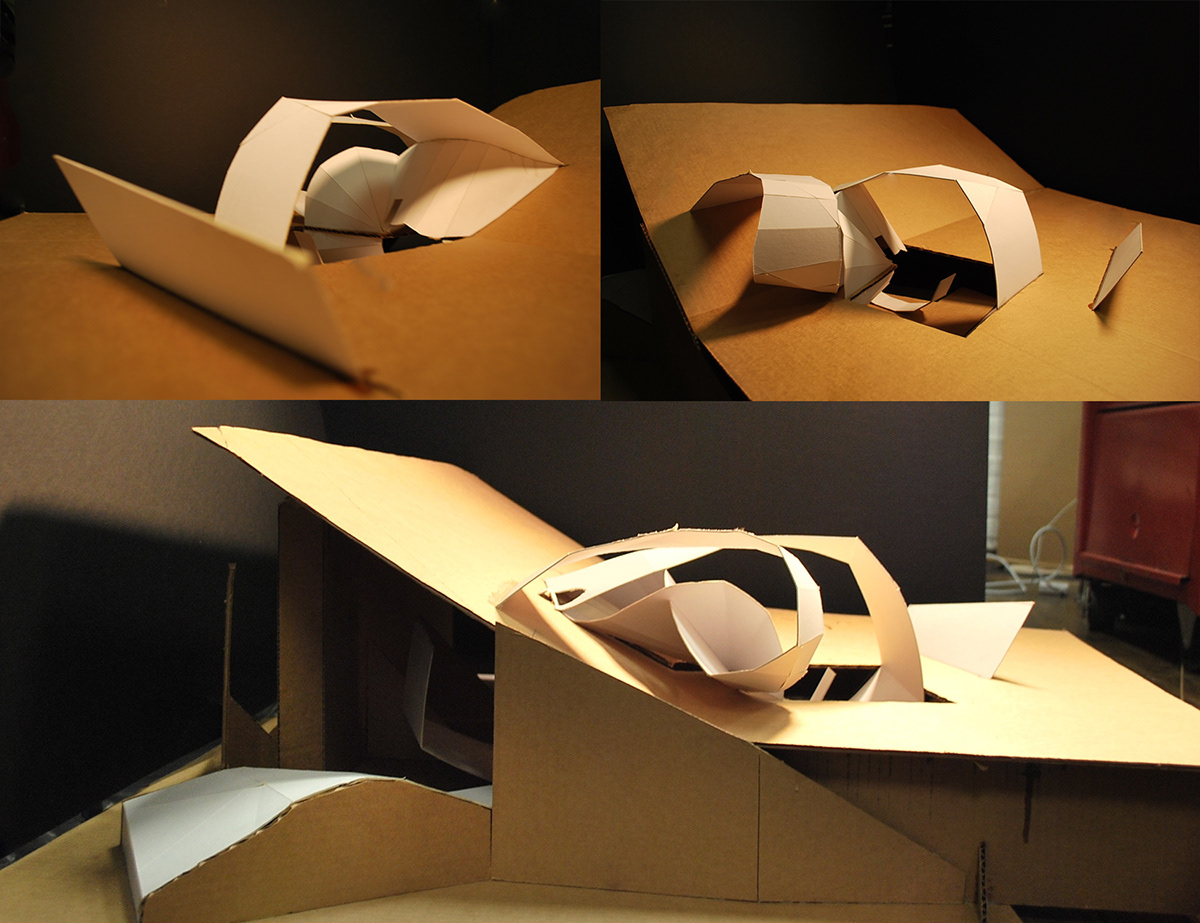This project is based on the analysis of two examples of Igor Stravinsky's "Rite of Spring" as a dance. Two separate versions of the dance were mapped and analyzed, creating a path-based architecture that allowed interactions between the inhabitants as they passed through the house.

The following is a study of modeling based on linear information attained from time-based media. The linear animation became the inspiration for this study. The lines formed a framework from which a structure could be attained.

A second study is one based on the modeling of a planar animation. This planar animation encouraged conscious decision-making in terms of controlling the curves and setting rules that could become a basis for the developing architecture in a more intended manner than previously explored.

The following are preliminary elevations and sections of earlier itirations of the final model. These drawings aided in solving problems that appeared difficult to solve or spot on the three-dimensional model. The structure benefitted significantly through the identification of issues in the drawings.

The plan of the final model. It was redrawn several times and displays the manner in which the grain of the landscape, attained through the mapping and analysis of the dance, directly contributed in the shaping of the paths that were to interact.
The animation below is the recording of the volumes and locations of the spaces created between two focal dancers in each of the two versions of "The Rite of Spring". The paths that were drawn by the patches created in the animation led to the creation of the grain in the landscape, which in turn led to the raising of the structure itself through extrusion.

Sections of the final model. These drawings, by showing the interaction of the structure with the ground, allowed for the consideration of thickness and choice in material. They also assured that nothing was missed in the finalization process of the model.



An enlarged copy of the front piece of the structure, covered by the flat roof in the photo above (bottom right of photograph). This also greatly influenced the final decisions regarding the thickness and use of material in the structure.




An animation demonstrating the paths that can be taken through the structure and the manner in which the two 'path-takers' interact. Separation and the creation of gaps between the inhabitants of the paths creates a dynamic environment that never loses one's consciousness over the other.


